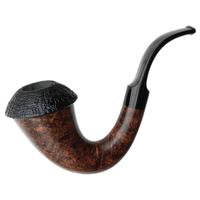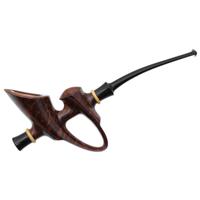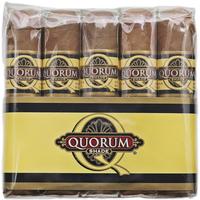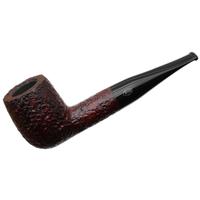EDIT: Fixed Capitalization in Title (See Rule 9) - Bob
Been cooking since I was a kid, and making ice cream for a little over a decade now because I saw an ice cream maker on sale online for about 20 bucks and thought, why not? I was a little cautious with the purchase, because all too often we buy these specialized appliances like bread makers or waffle irons and they have their novelty for a while but then they eventually lose their novelty or for some reason or another we decide to just no longer use them, and then they just gather dust and the appliance manufacturer laughs straight to the bank.
This turned out to not be the case with my little ice cream maker. I use it several times a year, for many years now, and have more or less come up with a simple way to make better-than-store-bought ice cream reliably, and just want to share my methods and thoughts on ice cream here for anyone else who maybe likes to dabble in these sorts of things for fun.
First, the basic custard recipe and method:
* 1.5 cups Heavy Cream
* 1.5 cups Whole milk
* 6-8 egg yolks
* 3/4 cup sugar
* Flavoring of your choice
I use more eggs if the yolks are smaller or medium sized, less yolks if they're large/x-large. I didn't list it, but I also use a restaurant/food industry stabilizer called Cremodan 30, which contains the stuff you see on ice cream labels; carageenan, locust bean gum, guar gum, etc. It's totally optional but I use it because it definitely improves the texture. I would recommend it once you discover you're making lots and lots of ice cream on the regular, otherwise it's not worth it. Occasionally, I will add a pinch of salt if the profile is very sweet or benefits from that kind of contrast.
The basic method is, you get your yolks separated, then add your dry stuff(sugar, in my case 1/4 teaspooon stabilizer). Slowly whisk until the yolks are brighter, pastel colored, about a minute or two. Fill a medium saucepan with the milk and cream, and bring it to just a few bubbles or forming(don't let it get to a real boil). Set it aside, and put a ladle of the cream mixture to the eggs, tempering them by whisking until incorporated. Repeat this until you have mixed everything. Next, return everything to the saucepan, and on medium-low, grab a silicon spatula so you can scrape the bottom of the pot easily and stir, until the mixture thickens a bit and coats the back of a spoon(do the ol' streak test and run your finger over to see if it maintains a streak-- then it's done). This can take anywhere from 5 to 15 minutes depending on how much heat you're using. It's crucial to get this step right. Too much, and you get scrambled eggs. Not enough, and your eggs won't form that gooey, sticky texture you get with half cooked yolks-- this is what gives custard based ice cream it's awesome texture. Strain, cover in plastic wrap sealing the entire surface so there's no air pockets otherwise a "skin" like film will form on the custard. Overnight is best, but 5-6 hours refrigerated is fine too.
This is just the basic process-- with flavorings, you get more complexity. As an example, yesterday morning I did a Hojicha flavored ice cream-- which is a heavy roasted Japanese Oolong-like tea-- chocolatey, burn sugar, mineral-y, woodsy, naturally sweet tasting. I steeped about a cup of leaf in with the milk, so I let it sit on low for longer until I was happy with how well infused the milk was, and resumed the rest of the method. The simplest would just be a tablespoon of good vanilla extract(or maybe a teaspoon if you use that paste stuff that looks like tar), or a slit+scraped vanilla pod+seeds into the cream mixture. With stuff like fruits, you get much more of a challenge because you need to somehow condense the flavor and remove water, or ice crystals will form and give you a bad texture. Much of making good home made ice cream is taking steps to reduce crystalization-- more on that later. You can offset stuff that you put a fruit concentrate in with more cream instead of milk.
For chocolate, I like to mix a few tablespoons of good cocoa powder and good dark chocolate. A pinch of salt here is also very beneficial. After tempering the eggs and heating the custard up, I also temper the chocolate here and awaken the cocoa, which I have in a steel bowl over a pot of hot water until everything is melting, slowly stirring in the custard and whisking until smooth. It will look like a disaster first, but don't worry, it will become shiny glossy chocolate as you stir more. Same as with the eggs, just combine both mixtures to get one, strain, refrigerate. Here you can use slightly less cream and more milk, unless you want really really really rich chocolate ice cream.
With coffee/espresso flavor ice cream, this has posed a challenge for me to learn. At first I tried to steep the grounds/espresso in the cream mixture, that didn't work and resulted in weak ice cream. I needed strong coffee, ideally espresso. If you don't own a fancy machine, a moka pot will produce a strong brew for you, with little investment. You need a very strong concentrate here for flavorful ice cream-- I replace 1 cup of the milk with 1 cup of strong moka pot coffee, and offset the balance here with 2 cups of cream. Not ideal, since I'm only replacing the fat and not the proteins of the milk, but it's the best I've come up with and works well enough. Use coffee beans that are low in acid, because otherwise they can break the cream mixture, potentially.
Most of the time I do vanilla, chocolate, coffee or tea flavors(Earl Grey, Thai Tea, Matcha are all mind-blowing ice creams) but I've experimented with all kinds of ice creams. Once you know the basic method, the sky is the limit and all you need to acquire is some form of concentrated flavor. Now, the process doesn't end here. When it comes to the actual maker, remember the part about ice crystals? The way these makers for home use work is they have these buckets containing a liquid refridgerant, and this freezes stuff rapidly, and a plastic paddle that remains stationary keeps the ice cream moving inside, while the bucket rotates, which gets you your churning.
But there's a problem: The bucket is so cold, it nearly instantly freezes the ice cream on the sides and bottom, and then it's just frozen ice cream creating a barrier between your unfrozen custard. Separation occurs slightly, and you get icy, poorly textured ice cream. In fancy ice cream makers or in professional kitchens, the mixture is agitated and frozen very quickly, which leads to a silky smooth ice cream. We can do this effect with our cheap 20 dollar ice cream maker, no problem. Take a very hard plastic spoon or knife or other implement(I don't recommend metal, it scratches the ice cream maker bowl). Has to be the sturdiest kind of plastic. Stick the thing into your churning ice cream, and press it against the wall and bottom, moving it around slowly to reach all the insides of the ice cream bucket. The turning of the bucket scrapes the sides, which frees this frozen ice cream into the unfrozen custard mixture, leaving space for the liquid custard to again hit the supercold bucket, freezing that, and the cycle repeats. This makes it so your ice cream freezes rapidly and has no time to form ice crystals, like that "Double churned" effect. It's extra work, but well worth it, because you will eat the best ice cream of your life, and less expensive than premium store bought ice cream. Once it's done, you'll have something a tad firmer than soft-serve. You can eat it now, and I always do right away, but it's best if frozen for another 6 hours to overnight-- you'll have perfectly scoopable silky ice cream.
This was a long writeup, and that may scare some of you, but honestly it's one of the simplest things you can make, and fast, if you don't count chilling the mixture. Eggs, sugar, whisk. Boil cream and milk and flavoring, mix the two, reheat til thick, fridge, bam. Into the maker, half an hour, bam. Once you start making your own, you'lI feel ripped off every time you buy inferior ice cream at the supermarket. I hope you give it a try sometime!
Been cooking since I was a kid, and making ice cream for a little over a decade now because I saw an ice cream maker on sale online for about 20 bucks and thought, why not? I was a little cautious with the purchase, because all too often we buy these specialized appliances like bread makers or waffle irons and they have their novelty for a while but then they eventually lose their novelty or for some reason or another we decide to just no longer use them, and then they just gather dust and the appliance manufacturer laughs straight to the bank.
This turned out to not be the case with my little ice cream maker. I use it several times a year, for many years now, and have more or less come up with a simple way to make better-than-store-bought ice cream reliably, and just want to share my methods and thoughts on ice cream here for anyone else who maybe likes to dabble in these sorts of things for fun.
First, the basic custard recipe and method:
* 1.5 cups Heavy Cream
* 1.5 cups Whole milk
* 6-8 egg yolks
* 3/4 cup sugar
* Flavoring of your choice
I use more eggs if the yolks are smaller or medium sized, less yolks if they're large/x-large. I didn't list it, but I also use a restaurant/food industry stabilizer called Cremodan 30, which contains the stuff you see on ice cream labels; carageenan, locust bean gum, guar gum, etc. It's totally optional but I use it because it definitely improves the texture. I would recommend it once you discover you're making lots and lots of ice cream on the regular, otherwise it's not worth it. Occasionally, I will add a pinch of salt if the profile is very sweet or benefits from that kind of contrast.
The basic method is, you get your yolks separated, then add your dry stuff(sugar, in my case 1/4 teaspooon stabilizer). Slowly whisk until the yolks are brighter, pastel colored, about a minute or two. Fill a medium saucepan with the milk and cream, and bring it to just a few bubbles or forming(don't let it get to a real boil). Set it aside, and put a ladle of the cream mixture to the eggs, tempering them by whisking until incorporated. Repeat this until you have mixed everything. Next, return everything to the saucepan, and on medium-low, grab a silicon spatula so you can scrape the bottom of the pot easily and stir, until the mixture thickens a bit and coats the back of a spoon(do the ol' streak test and run your finger over to see if it maintains a streak-- then it's done). This can take anywhere from 5 to 15 minutes depending on how much heat you're using. It's crucial to get this step right. Too much, and you get scrambled eggs. Not enough, and your eggs won't form that gooey, sticky texture you get with half cooked yolks-- this is what gives custard based ice cream it's awesome texture. Strain, cover in plastic wrap sealing the entire surface so there's no air pockets otherwise a "skin" like film will form on the custard. Overnight is best, but 5-6 hours refrigerated is fine too.
This is just the basic process-- with flavorings, you get more complexity. As an example, yesterday morning I did a Hojicha flavored ice cream-- which is a heavy roasted Japanese Oolong-like tea-- chocolatey, burn sugar, mineral-y, woodsy, naturally sweet tasting. I steeped about a cup of leaf in with the milk, so I let it sit on low for longer until I was happy with how well infused the milk was, and resumed the rest of the method. The simplest would just be a tablespoon of good vanilla extract(or maybe a teaspoon if you use that paste stuff that looks like tar), or a slit+scraped vanilla pod+seeds into the cream mixture. With stuff like fruits, you get much more of a challenge because you need to somehow condense the flavor and remove water, or ice crystals will form and give you a bad texture. Much of making good home made ice cream is taking steps to reduce crystalization-- more on that later. You can offset stuff that you put a fruit concentrate in with more cream instead of milk.
For chocolate, I like to mix a few tablespoons of good cocoa powder and good dark chocolate. A pinch of salt here is also very beneficial. After tempering the eggs and heating the custard up, I also temper the chocolate here and awaken the cocoa, which I have in a steel bowl over a pot of hot water until everything is melting, slowly stirring in the custard and whisking until smooth. It will look like a disaster first, but don't worry, it will become shiny glossy chocolate as you stir more. Same as with the eggs, just combine both mixtures to get one, strain, refrigerate. Here you can use slightly less cream and more milk, unless you want really really really rich chocolate ice cream.
With coffee/espresso flavor ice cream, this has posed a challenge for me to learn. At first I tried to steep the grounds/espresso in the cream mixture, that didn't work and resulted in weak ice cream. I needed strong coffee, ideally espresso. If you don't own a fancy machine, a moka pot will produce a strong brew for you, with little investment. You need a very strong concentrate here for flavorful ice cream-- I replace 1 cup of the milk with 1 cup of strong moka pot coffee, and offset the balance here with 2 cups of cream. Not ideal, since I'm only replacing the fat and not the proteins of the milk, but it's the best I've come up with and works well enough. Use coffee beans that are low in acid, because otherwise they can break the cream mixture, potentially.
Most of the time I do vanilla, chocolate, coffee or tea flavors(Earl Grey, Thai Tea, Matcha are all mind-blowing ice creams) but I've experimented with all kinds of ice creams. Once you know the basic method, the sky is the limit and all you need to acquire is some form of concentrated flavor. Now, the process doesn't end here. When it comes to the actual maker, remember the part about ice crystals? The way these makers for home use work is they have these buckets containing a liquid refridgerant, and this freezes stuff rapidly, and a plastic paddle that remains stationary keeps the ice cream moving inside, while the bucket rotates, which gets you your churning.
But there's a problem: The bucket is so cold, it nearly instantly freezes the ice cream on the sides and bottom, and then it's just frozen ice cream creating a barrier between your unfrozen custard. Separation occurs slightly, and you get icy, poorly textured ice cream. In fancy ice cream makers or in professional kitchens, the mixture is agitated and frozen very quickly, which leads to a silky smooth ice cream. We can do this effect with our cheap 20 dollar ice cream maker, no problem. Take a very hard plastic spoon or knife or other implement(I don't recommend metal, it scratches the ice cream maker bowl). Has to be the sturdiest kind of plastic. Stick the thing into your churning ice cream, and press it against the wall and bottom, moving it around slowly to reach all the insides of the ice cream bucket. The turning of the bucket scrapes the sides, which frees this frozen ice cream into the unfrozen custard mixture, leaving space for the liquid custard to again hit the supercold bucket, freezing that, and the cycle repeats. This makes it so your ice cream freezes rapidly and has no time to form ice crystals, like that "Double churned" effect. It's extra work, but well worth it, because you will eat the best ice cream of your life, and less expensive than premium store bought ice cream. Once it's done, you'll have something a tad firmer than soft-serve. You can eat it now, and I always do right away, but it's best if frozen for another 6 hours to overnight-- you'll have perfectly scoopable silky ice cream.
This was a long writeup, and that may scare some of you, but honestly it's one of the simplest things you can make, and fast, if you don't count chilling the mixture. Eggs, sugar, whisk. Boil cream and milk and flavoring, mix the two, reheat til thick, fridge, bam. Into the maker, half an hour, bam. Once you start making your own, you'lI feel ripped off every time you buy inferior ice cream at the supermarket. I hope you give it a try sometime!
Last edited by a moderator:










